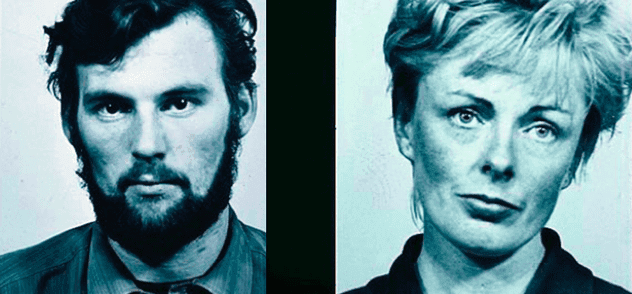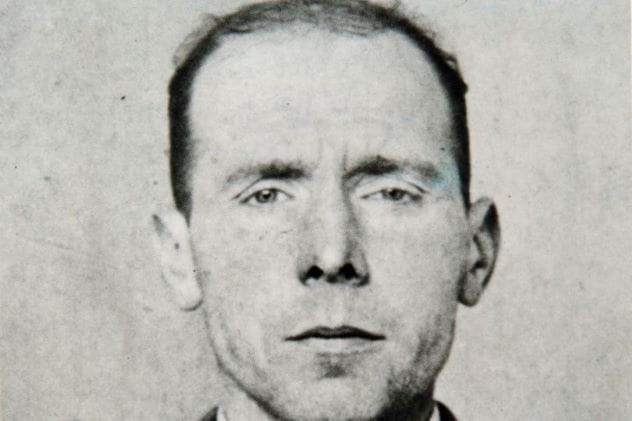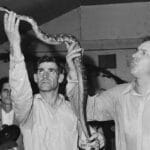Scotland, a land of breathtaking landscapes and rich history, also holds a darker side. Throughout the centuries, some truly shocking and infamous murder cases have unfolded, leaving an indelible mark on the nation’s memory. From crimes of passion to calculated killings for gain, these stories offer a chilling glimpse into the human capacity for darkness. Join us as we explore ten of Scotland’s most notorious murder cases, each with its own grim tale to tell.
10. Robert Balfour

Robert Balfour, who became the fifth Lord Balfour of Burleigh in 1713, had a fiery temper when it came to love. His aristocratic parents disapproved of his romance with a woman they considered beneath his station and sent him abroad. Before leaving, Balfour warned his beloved that if she married another in his absence, he’d kill her new husband. She didn’t heed his threat and wed Henry Stenhouse, a school teacher. Upon Balfour’s return to Scotland in 1707, he made good on his promise, finding Stenhouse and fatally stabbing him. Though sentenced to beheading in 1709, Balfour cleverly escaped prison disguised in his sister’s clothes and lived until 1757.
9. Harry Burnett
In 1963, 21-year-old Harry Burnett’s life took a dark turn. He fell for Margaret Guyan, a married woman four years his senior. Margaret, whose marriage to mariner Thomas Guyan was reportedly unhappy, moved in with Burnett. However, Burnett proved to be intensely jealous and controlling. When Margaret decided to return to her husband, Burnett was enraged. He acquired a shotgun, tracked down Thomas Guyan, and, in his own words, “gave him both barrels.” Thomas died instantly. Despite a plea of insanity at his trial, Burnett was found guilty of murder. He was hanged, becoming the last man executed in Scotland before capital punishment was abolished.
8. Sheila Garvie and Brian Tevendale

The 1968 trial of Sheila Garvie and Brian Tevendale for the murder of Sheila’s husband, Max, captivated Scotland. In an era of strict social conservatism, revelations of orgies, nudism, and bizarre sexual practices shocked and fascinated the public. Sheila and Brian were having an affair, which Sheila claimed Max had instigated. Max, in turn, was involved with Tevendale’s sister. The prosecution argued that Sheila conspired with Tevendale, letting him into their farmhouse where he shot Max Garvie as he lay in bed. Both were found guilty and sentenced to life, though they were released in 1978.
7. Mary Timney
January 1862 brought a grisly discovery in Dumfries. Lockhart Hannah found his sister, Anna, brutally beaten and near death in her home. A knife and an iron bar lay bloodied beside her. Suspicion quickly fell on Mary Timney, Anna’s next-door neighbor, with whom she had previously quarreled. Eyewitnesses reported seeing Timney in bloodstained clothes. The trial revealed the dispute was over allegedly stolen wood. The jury took only 30 minutes to find Timney guilty. Despite a campaign for mercy, Mary Timney was publicly hanged in Dumfries in 1862, the last woman to suffer this fate in Scotland.
6. Patrick Carraher

Glasgow in the 1930s was a city plagued by violent street gangs like the Norman Conks and the Billy Boys. Among the most feared gangsters was Patrick Carraher. Though from a respectable working-class family, Carraher embraced a life of crime early on, first incarcerated at 14. His violence wasn’t limited to rival gang members; innocent people also suffered. Carraher’s reign of terror ended when he killed a soldier, John Gordon, during a brawl. His attempt to use psychopathy as a defense at his murder trial failed, and he was hanged in Glasgow’s Barlinnie Prison in 1946 at the age of 40.
5. Donald Forbes

Donald Forbes was a career criminal whose life was marked by shocking violence. In 1958, while robbing a plant near Edinburgh, he killed a nightwatchman who resisted. Forbes was sentenced to death, but his sentence was commuted to life imprisonment after a public campaign. He was released in 1970 after serving less than twelve years. Astonishingly, just seven weeks later, Forbes killed again, stabbing a man in a pub fight. He received a second life sentence. He was freed in 1999, only to be convicted of drug offenses in 2003 at age 68, receiving a 12-year sentence. This time, he died in prison in 2008, having spent over 40 years of his life incarcerated.
4. Archibald Hall
Archibald Hall, born in Glasgow, was a butler with a deadly secret: he was a serial killer. His first murder occurred in 1975 when he shot a former lover, David Wright. Moving to London, he worked for the Scott-Elliot family. In 1977, Hall, along with accomplices Mary Coggle and Michael Kitto, planned to rob his employers. When Mrs. Scott-Elliot unexpectedly returned, she was killed. They then murdered Mr. Scott-Elliot in Scotland. Next, Hall and Kitto turned on Coggle, killing her. Finally, Hall, with Kitto’s aid, murdered his own half-brother, Donald. The pair were caught preparing to dispose of Donald’s body. Both received four life sentences, and Hall died in prison in 2002.
3. Captain Kidd
William Kidd, likely born in Dundee around 1654, became a well-known ship’s captain based in New York. In the 1690s, he operated as a privateer, fighting for the English and hunting pirates. In 1696, while commanding the Adventure Galley in the Indian Ocean to eliminate pirate ships, his crew grew restless. During a heated argument, Kidd fatally struck his gunner with a heavy bucket. Due to shifting political tides and his privateering activities, Kidd himself was accused of piracy and the murder of his gunner. Arrested in Boston, he was sent to London, tried, and found guilty in 1701. Captain Kidd was hanged, his body displayed in chains by the Thames.
2. Ernest Dumoulin

In October 1972, just days after marrying 18-year-old German Helga Konrad, 21-year-old Ernest Dumoulin committed a heinous act. After what he later described as a passionate kiss, he pushed his new bride off a cliff at Salisbury Crags in Edinburgh, causing her to fall 100 feet to her death. Dumoulin initially claimed it was a tragic accident. However, the landlady of their lodgings discovered a receipt for a substantial life insurance policy taken out on Helga. This discovery led to Dumoulin’s trial and conviction for murder. He served 16 years in a Scottish prison before moving to Germany.
1. Peter Manuel
Peter Manuel, born in 1927, began his criminal career early, receiving his first prison sentence at 15 for a violent burglary. His crimes escalated to murder in 1956 when he killed 17-year-old Anne Kneilands. He initially evaded justice thanks to an alibi from his father. Later that year, Manuel shot and killed Marion Watt, her sister Margaret Brown, and Marion’s daughter Vivienne. He then murdered 17-year-old Isabelle Cooke. His killing spree continued with the murders of Peter Smart, his wife Doris, and their 11-year-old son Michael, all shot in their beds during a burglary. Arrested in early 1958, Manuel was tried for eight murders and sentenced to death. He was hanged at Barlinnie Prison in July 1958.
A Legacy of Darkness
These ten cases, spanning nearly three centuries, offer a somber look into some of the darkest chapters of Scottish history. From calculated killings driven by greed or jealousy to the brutal acts of serial murderers, each story is a stark reminder of the shadows that can lurk beneath a nation’s proud exterior. They remain etched in Scotland’s collective memory, cautionary tales of justice, and the enduring impact of heinous crimes.
What are your thoughts on these infamous cases? Do you know of other Scottish murder cases that shocked the nation? Leave your comment below.










